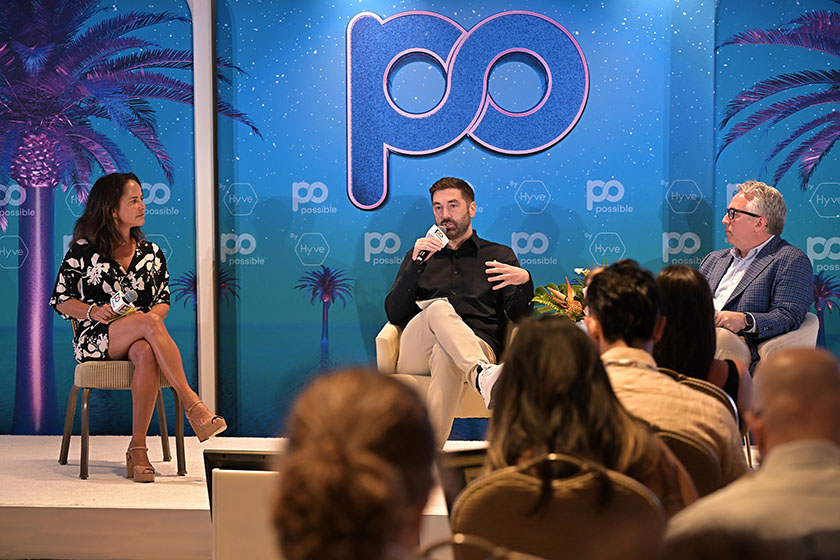In a world of data and automation, can brands still feel human? Read article


AdExchanger’s Programmatic I/O is an annual event in New York City, focused on all that’s new and exciting in the digital advertising space. As a strategic partner for marketers in the transportation industry, Arity attended this year’s show from October 17-18. Autumn is a beautiful time of change in New York as the leaves start to turn, and it’s also a great time to check in with the trends and innovations in the programmatic industry to make sure you’re doing all you can to connect with your best customers.
Before diving in, let’s do a quick refresher on what exactly “programmatic advertising” means.
Programmatic advertising really took off in the early- to mid-2010s, and while technology continues to evolve and the ad tech world somehow seems to get more complex every year, some themes remain consistent over time.
Here are Arity’s key takeaways from Programmatic I/O 2022 to help marketers stay on their game and optimize their programmatic advertising activities:
A major theme of the conference was safeguarding user data privacy. The past few years have seen a growing number of government responses to companies gathering, using, and selling consumer data, including GDPR legislation in the EU, California’s CCPA regulation, and most recently, a lawsuit by the FTC against Kochava. Data is the lifeblood of programmatic, so companies must figure out how to continue to operate within the law and with respect for consumers, while still leveraging data to create meaningful connections with customers.
A popular buzzword this year at Programmatic I/O was “data clean room.” Data clean rooms are places where walled gardens like Google, Facebook, and Amazon share aggregated data with advertisers, while still exerting controls over the data. First-party data from the advertiser comes into the same space, and the advertiser can see how it matches up with the aggregated data from the platforms. Data clean rooms are one example of how advertisers and publishers are collaborating to keep user data secure, while continuing to leverage it to optimize offerings to their customers and improve their business.
Another critical topic was the use of location data and the need to ensure individual privacy. Especially in today’s climate, in a post-Roe v. Wade world and with places of worship being potential targets of violence or discrimination, user location data takes on an extra layer of sensitivity. Megan Walton of Vox Media, and Joanna Levin who runs Global Privacy for Pfizer were two of many speakers who discussed how now, more than ever, both advertisers and publishers must do everything possible to ensure that user location data is protected and not shared or sold at an individually identifiable level.
In her keynote talk, Shenan Reed from L’Oréal reminded us that marketers must be human-centric. Despite how digital marketers might describe their advertising goals, people aren’t “targets” and customers aren’t “users.” People are individuals, and consumers deserve meaningful, respectful interactions with brands and access to the best possible customer experience. L’Oréal has made it a priority to put its customers at the center of its marketing efforts, and Reed urged other marketers to do the same.
On a related note, some speakers emphasized the need to connect ad creative with business KPIs. Ellen Jantsch of Tuff, a growth marketing company, talked about how important it is to have a feedback loop between ad creative and measurement to ensure campaign goals are being met. Ad creative has the power to make or break a campaign, but brands and their agencies need to consistently test, use data, iterate, develop platform-specific assets and KPIs, and pivot as needed to achieve success.
A theme we heard consistently across every session was the need to test, test, and test again. A strategy that may have worked well just a year or two ago may not see the same results today, and there are many reasons why that might be. New technologies are cropping up every day, and the ways consumers engage with media and content is changing in real-time. One-size fits all strategies and creative approaches don’t work, especially as new formats emerge and explode, like TikTok, to use just one recent example.
Not only is it important to test new creative approaches, but marketers should also be evaluating their KPIs over time. Are the KPIs you’re using really aligned with long-term company goals? Areeb Mahamadi of Within, a performance branding company, stressed the importance of using Lifetime Value (LTV) as a key metric for success, and focusing on the relationship between Customer Acquisition Cost (CAC) and LTV. He explained that many brands pull back on campaigns that don’t perform well in the short-term, but that they’re missing an opportunity to optimize for the long-term by shifting to an LTV-focused KPI. Especially in times of economic downturn or uncertainty, it’s important to use a longer-term metric like LTV/CAC to evaluate success.
The looming specter of third-party cookie deprecation is never far from anyone’s mind in the programmatic crowd. And although Google has delayed the removal of third-party cookies from its Chrome browser until 2024, advertisers and publishers need to prepare now for a post-cookie world.
Speakers like Tom Mitchel from InMarket and Ashley Wheeler from Magnite discussed how advertisers should leverage strategies outside of cookie-based targeting to survive over time. These strategies may include using advertisers’ own consumer touchpoints to collect first-party data, creating partnerships to leverage second-party data, and experimenting with contextual and interest-based advertising.
Other topics of discussion we heard a lot about included Supply Path Optimization (SPO), private marketplaces, ethical advertising, measurement and attribution, identity resolution, and rapidly growing channels like connected TV.
In summary, Programmatic I/O is a great event to attend for a lot of insightful content, emerging ideas, and exciting opportunities in this ever-evolving industry.
Interested in how Arity’s marketing solutions can help optimize your programmatic spend? Contact us to learn more.